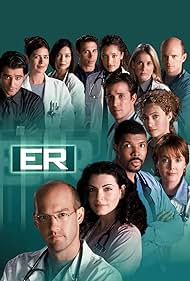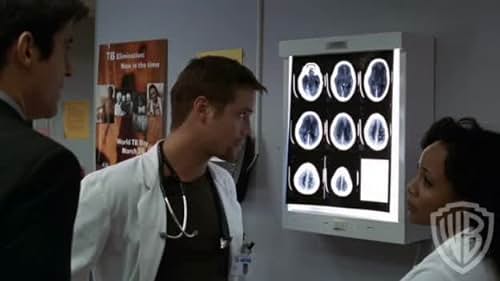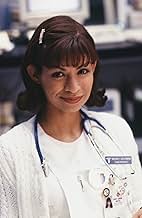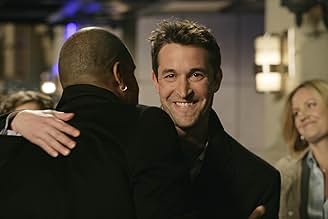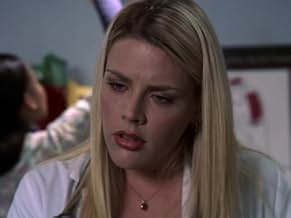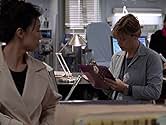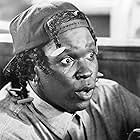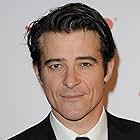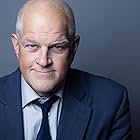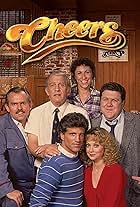Le vite, gli amori e le perdite dei medici e degli infermieri del County General Hospital di Chicago.Le vite, gli amori e le perdite dei medici e degli infermieri del County General Hospital di Chicago.Le vite, gli amori e le perdite dei medici e degli infermieri del County General Hospital di Chicago.
- Vincitore di 23 Primetime Emmy
- 157 vittorie e 370 candidature totali
Sfoglia gli episodi
Trama
Lo sapevi?
- QuizDuring an interview for the PBS series "Pioneers of Television," Noah Wyle said that while filming some of Carter's Africa storyline in the Kalahari Desert, the real on-set medic passed out from the heat, and Wyle (who by that time had been filmed pretending to perform hundreds of simulated medical procedures for the television show) inserted a real I.V. and hooked the medic up to a real saline drip.
- BlooperIn many episodes the doctors cross over to different rooms or send other doctors/nurses to another room (touching walls/doors, and don't change robes and possibly gloves.
- Citazioni
Dr. Kerry Weaver: [leaving Luka a message] Luka, this is Kerry Weaver. I'm down two attendings and up 40 patients. If you don't get in here and start working your scheduled shifts, I'm gonna call the INS, tell 'em your greencard's a fake, and have your ass deported
- Versioni alternativeDuring Super Bowl XXXVIII (2004) on 1 Feb. 2004, a storm of controversy erupted over the halftime show featuring Justin Timberlake and Janet Jackson. When the episode E.R. - Medici in prima linea (1994) episode "Touch and Go" was set to first air on 5 Feb., the episode was under a scrutiny over the fact that it would featured an elderly woman's bare breasts. In light of all the media attention, the episode aired with the woman's breasts obscured. However, the episode continues to air in re-runs and syndication in its uncensored form.
- ConnessioniEdited from Muppet Show: Jean-Pierre Rampal (1980)
Recensione in evidenza
ER in its present, 2003 form is a schizophrenic mess. For every one intelligent, caring episode comes four or five exercises in downbeat, melodramatic soap opera which sap all the energy out of the show's still-present technical mastery. This four-disc set is a welcome flashback to the show's humble beginnings, when it wasn't supposed to be the most heart-pounding show on television, and succeeded on will, not on hype.
The central characters in the first season are Chief Resident Dr. Mark Greene (Anthony Edwards), ER Residents Susan Lewis (Sherry Stringfield) and pediatrician Doug Ross (George Clooney), Head Nurse Carol Hathaway (Julianna Marguiles), Surgical Resident Dr. Peter Benton (Eriq la Salle) and his protégé, third-year med student John Carter (Noah Wyle, the only actor to remain on the show through the entire run). They brought a fresh edge to the oft-repeated world of medical drama, helped greatly by the first television show, in my estimation, to ever put actual intelligence into the presentation. On ER, the cameras move, the people move, the consistent hustle and bustle of an actual environment is palpable, and not simply a setpiece. It's interesting to note that although the show was never broadcast in widescreen until 2001, in the middle of it's seventh season, these first episodes are all presented in the wider format. At first it might seem like hubris, but most of them fit the frame very well, with shots composed and staged for the wider picture - it's not `cinematic' just for its own sake.
Standout episodes from the season include the exposition-heavy `Pilot' which still found time for drama; `Blizzard' which was a tour-de-force of film, editing, and cutting edge medical realism; `Hit & Run' & `Sleepless in Chicago' which dealt with the heavy burden of juggling personal & professional medical care, as well as Carter's development as a doctor; and `Love's Labor Lost', an absolute masterpiece from every angle: drama, directing, scripting, staging, scoring, every cosmic tumbler clicked into place for this episode centered around Greene's tragic triumph in the case of a pregnancy gone bad.
The show took a few (deserved) knocks for being shamelessly convenient in its storylines and ignoring the realities of daily hospital structure in favor of sensationalism. This is exaggerated a little, but still a valid point; rarely an episode goes by without something in the line of an unexpected pregnancy, a suicide attempt, a violent skirmish between doctor and patient, or (in one outrageous case) a 12-year old gang member brining his Glock into a trauma room to try and finish another 12-year old off. Still, the show displayed remarkable resilience in almost always rising to become greater than the sum of its parts. Naturally, that ability has waned and virtually disappeared, but these episodes are no less enjoyable as a result of that.
The central characters in the first season are Chief Resident Dr. Mark Greene (Anthony Edwards), ER Residents Susan Lewis (Sherry Stringfield) and pediatrician Doug Ross (George Clooney), Head Nurse Carol Hathaway (Julianna Marguiles), Surgical Resident Dr. Peter Benton (Eriq la Salle) and his protégé, third-year med student John Carter (Noah Wyle, the only actor to remain on the show through the entire run). They brought a fresh edge to the oft-repeated world of medical drama, helped greatly by the first television show, in my estimation, to ever put actual intelligence into the presentation. On ER, the cameras move, the people move, the consistent hustle and bustle of an actual environment is palpable, and not simply a setpiece. It's interesting to note that although the show was never broadcast in widescreen until 2001, in the middle of it's seventh season, these first episodes are all presented in the wider format. At first it might seem like hubris, but most of them fit the frame very well, with shots composed and staged for the wider picture - it's not `cinematic' just for its own sake.
Standout episodes from the season include the exposition-heavy `Pilot' which still found time for drama; `Blizzard' which was a tour-de-force of film, editing, and cutting edge medical realism; `Hit & Run' & `Sleepless in Chicago' which dealt with the heavy burden of juggling personal & professional medical care, as well as Carter's development as a doctor; and `Love's Labor Lost', an absolute masterpiece from every angle: drama, directing, scripting, staging, scoring, every cosmic tumbler clicked into place for this episode centered around Greene's tragic triumph in the case of a pregnancy gone bad.
The show took a few (deserved) knocks for being shamelessly convenient in its storylines and ignoring the realities of daily hospital structure in favor of sensationalism. This is exaggerated a little, but still a valid point; rarely an episode goes by without something in the line of an unexpected pregnancy, a suicide attempt, a violent skirmish between doctor and patient, or (in one outrageous case) a 12-year old gang member brining his Glock into a trauma room to try and finish another 12-year old off. Still, the show displayed remarkable resilience in almost always rising to become greater than the sum of its parts. Naturally, that ability has waned and virtually disappeared, but these episodes are no less enjoyable as a result of that.
I più visti
Accedi per valutare e creare un elenco di titoli salvati per ottenere consigli personalizzati
Dettagli
Contribuisci a questa pagina
Suggerisci una modifica o aggiungi i contenuti mancanti
